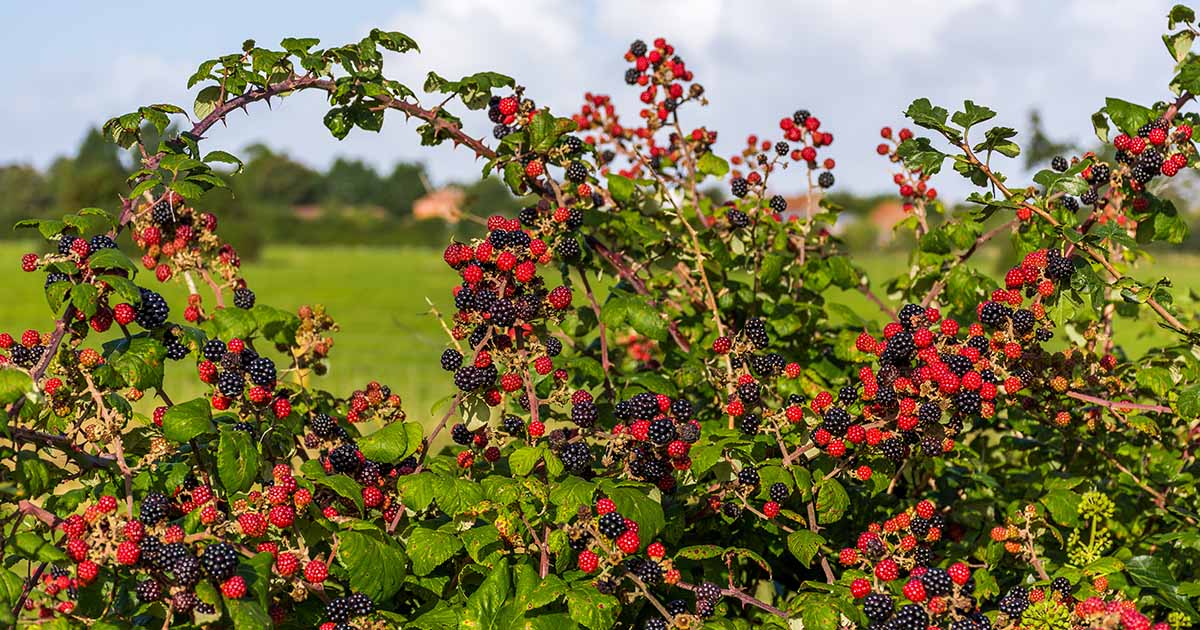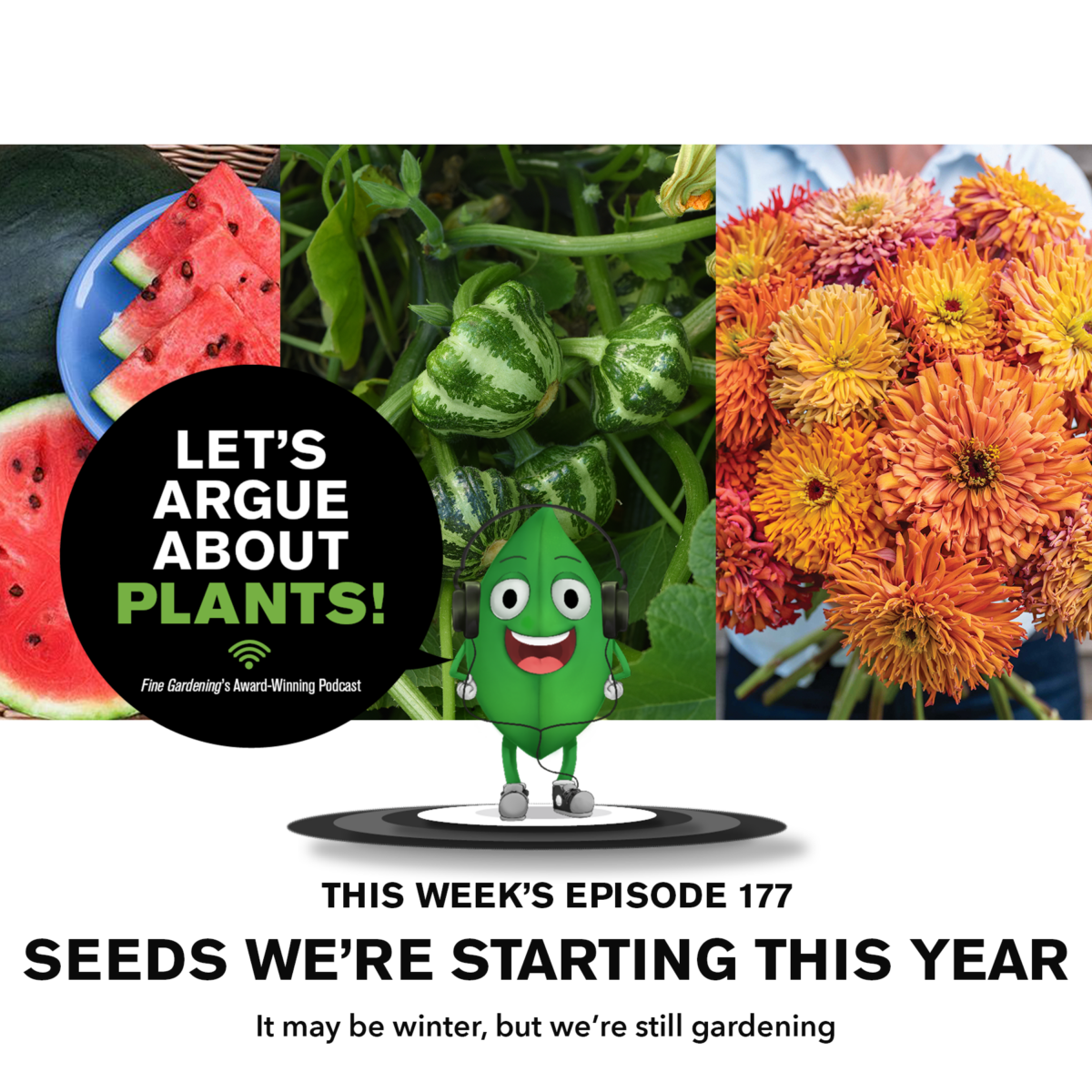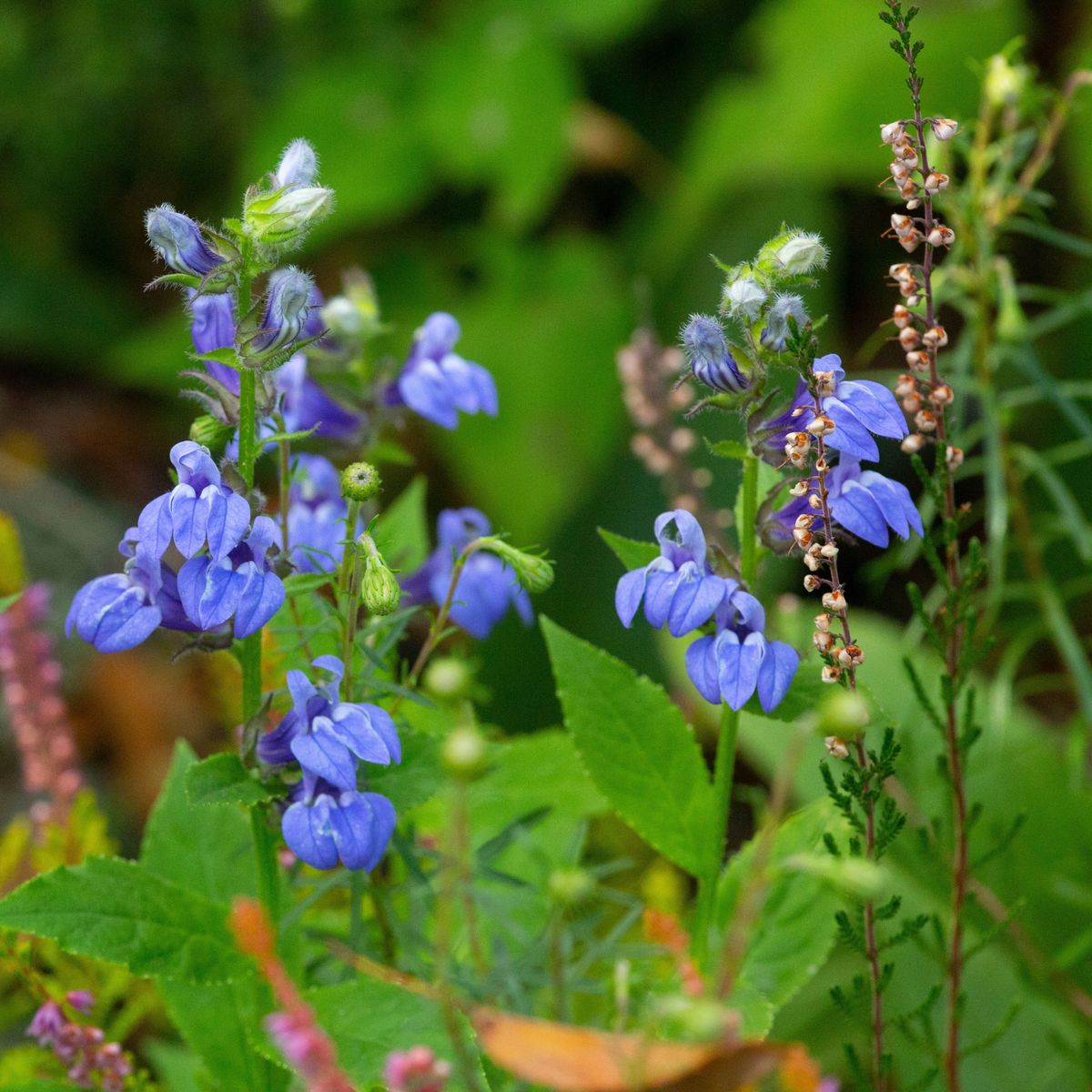Ready for your best harvest ever? Learning how to prune blackberry bushes is an important part of growing a successful crop.
In addition to keeping berry brambles from becoming overgrown and unmanageable, pruning improves yields and creates healthier, stronger plants.
Blackberries are perennials, which means once you establish a patch, you can have a berry harvest every year!
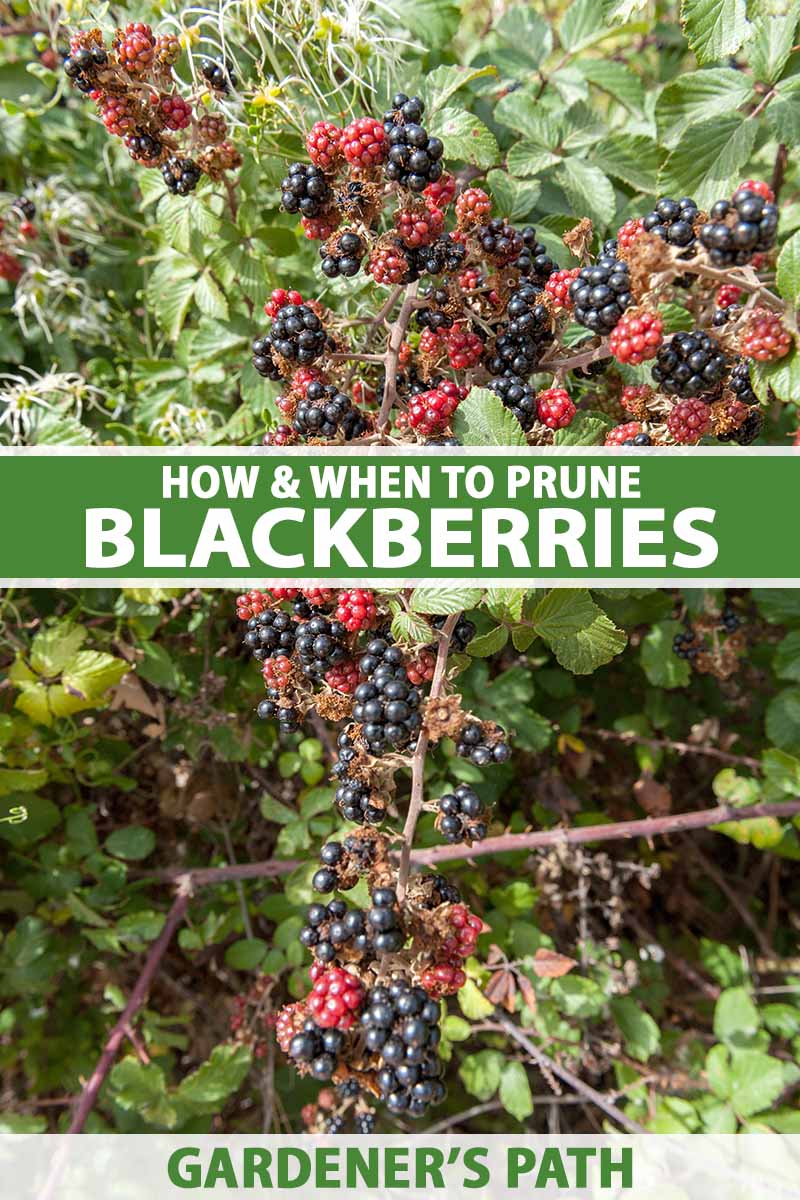
We link to vendors to help you find relevant products. If you buy from one of our links, we may earn a commission.
But if you don’t prune them regularly, blackberry brambles can quickly get out of control, creating a mess of unruly thorns, and ultimately, fewer fruits.
Luckily, all it takes is a bit of annual maintenance to keep them happy. Continue reading to learn how and when to trim blackberry bushes.
What Are Primocanes and Floricanes?
To prune correctly, it is important to first understand how these shrubs grow and set fruit. You can read all about planting and growing blackberries in our guide.
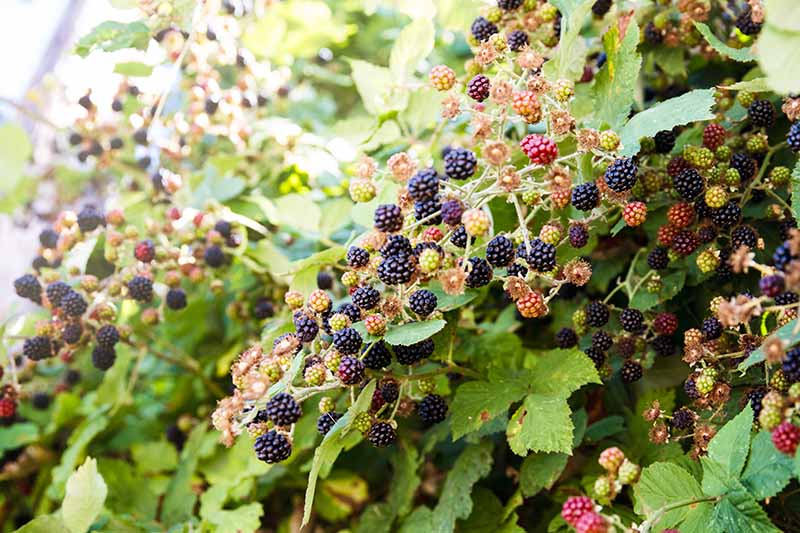
But I’ll begin with a quick recap here on their habit and structure.
While blackberries are perennials, the individual canes are biennial, meaning they grow and fruit over a two-year cycle.
For most varieties, fruit is produced on the two-year-old canes. Once a cane has set fruit, it will not produce berries again.

The first-year shoots are called primocanes. These shoots grow vigorously with thick green foliage, developing buds late in the season. Unpruned, these can grow several feet tall.
Floricanes are the second-year shoots. These woodier canes blossom in the spring and set fruit during midsummer, dying back after harvest.
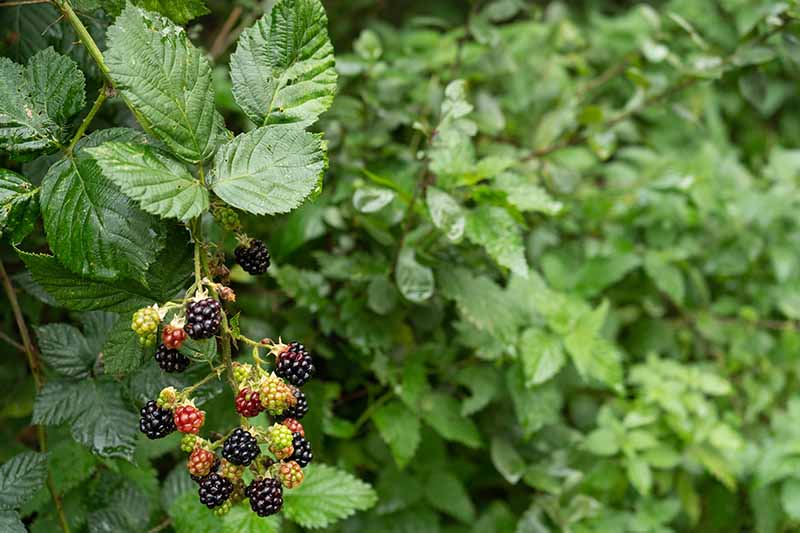
A mature plant should have both primocanes and floricanes at the same time, each with different pruning requirements and necessary timing.
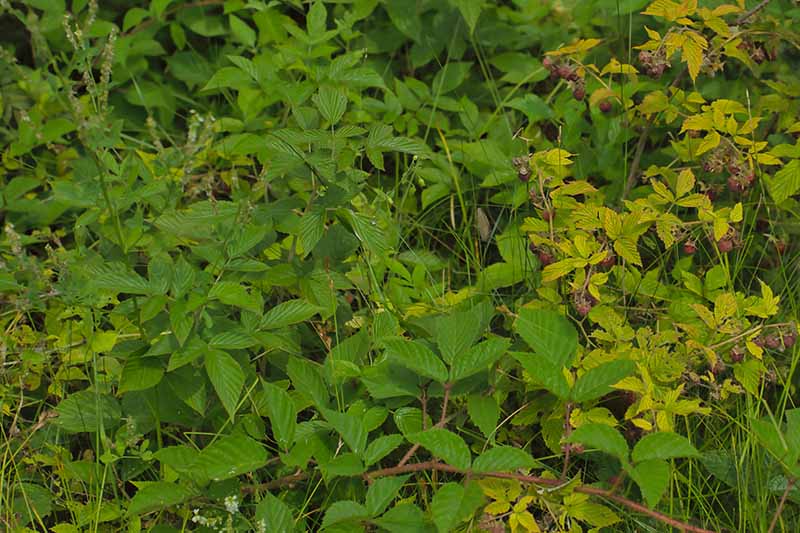
Pruning of first-year primocanes during late winter and spring encourages healthy plant growth, and improves fruiting.
Fall trimming of the second-year floricanes is useful for cleaning up the garden, and promoting new shoots to grow the following spring.
Springtime Primocane Pruning
In the winter or early spring, thin the first-year canes to four to six per plant, being sure to remove any that are damaged or diseased.
You should also cut off the tips of the primocanes once they have grown a few feet tall. Do this during the spring, before flowering begins.
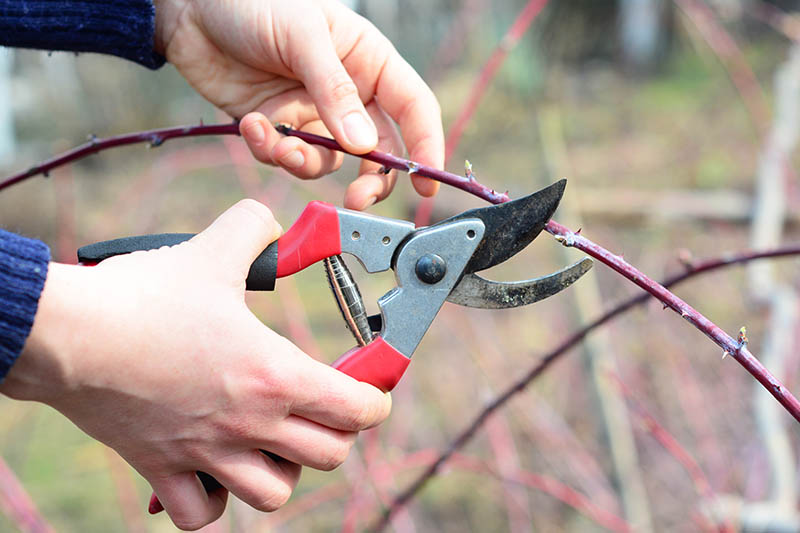
This will encourage side branching, which will lead to heavier fruit yields the following season. This also creates stronger canes that are less likely to flop over when heavy with fruit and foliage.
Take a pair of clean, sharp garden shears and cut the canes back to about two feet tall. You can also prune back side shoots to about a foot.
Those that are already shorter than two feet should be cut just an inch or so, to force them to branch out.
Late Summer Floricane Pruning
After you have enjoyed this season’s blackberry harvest, it’s time to clean up!
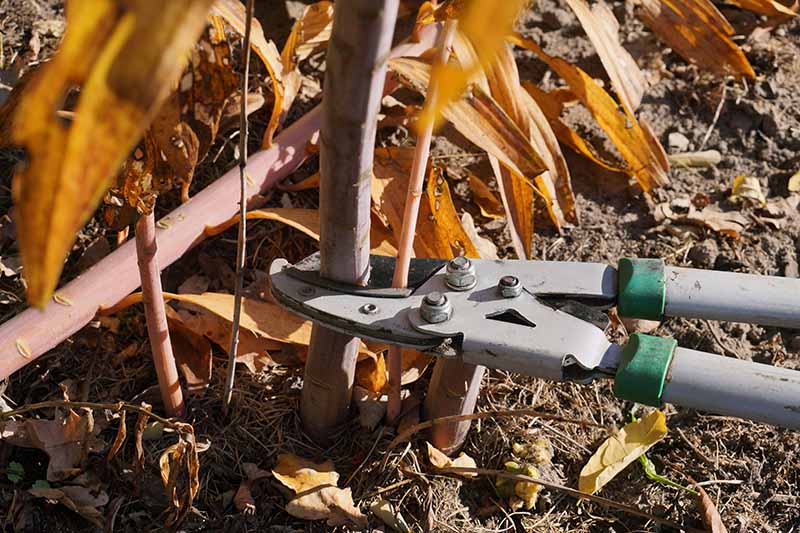
In late summer or fall, once fruiting has finished, use clean and sharp garden shears to cut the two-year-old canes back to the ground, and remove them from the garden.
Always be sure to wear long sleeves and gardening gloves if working with thorny varieties!
Fall-Bearing Varieties
It is also worth noting that there are some newer blackberry cultivars called everbearing, fall-bearing, or primocane varieties.
Instead of producing berries only on second-year canes like other types, these will also produce a smaller amount of fruit on the tips of the primocanes in the fall.
For this type of blackberry, you should prune back the dead tips of the primocanes after they produce in the fall, in addition to the trimming described above.
Prune the tips back a couple of nodes below the dead portion of each primocane.
A Berry Good Harvest
While it may seem like a lot to consider, once you get the hang of blackberry pruning, it is actually quite simple – and absolutely worth it.
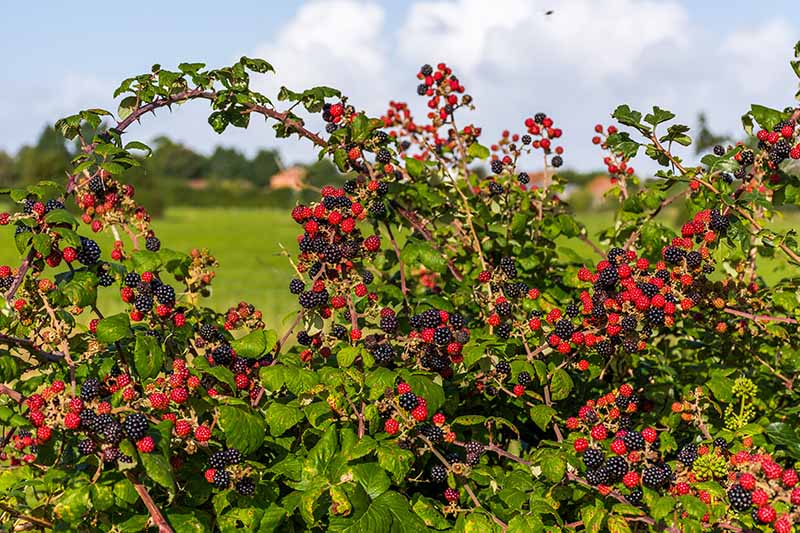
Keeping these shrubs trimmed appropriately will minimize trouble down the road, and leave you with more berries each year.
Have you had success improving yields and keeping your plants fresh and healthy with regular haircuts? Any questions? Feel free to get in touch via the comments below!
And if you are looking for more information about growing delicious berries in your garden, you will love these articles:
About Heather Buckner
Heather Buckner hails from amongst the glistening lakes of Minnesota, and now lives with her family on a beautiful homestead in the Vermont Mountains. She holds a bachelor of science degree in environmental science from Tufts University, and has traveled and worked in many roles in conservation and environmental advocacy, including creating and managing programs based around resource conservation, organic gardening, food security, and building leadership skills. Heather is a certified permaculture designer and student herbalist. She is also a fanatical gardener, and enjoys spending as much time covered in dirt as possible!

